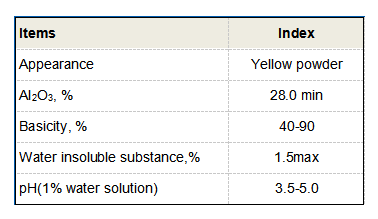Exploring the Applications and Safety of Methylisothiazolinone in Modern Products
Understanding Methylisothiazolinone Uses, Risks, and Alternatives
Methylisothiazolinone (MIT) is a synthetic biocide widely used in various industries, particularly in personal care products, household cleaners, and industrial applications. Its primary function is to prevent microbial growth and extend the shelf life of products. Despite its effectiveness, there are growing concerns regarding its safety, prompting discussions about its use in consumer goods.
Chemical Characteristics and Applications
MIT is a member of the isothiazolinone family, which includes other compounds like methylchloroisothiazolinone (MCI). These substances are characterized by their ability to inhibit bacteria and fungi, making them valuable in preserving formulations. You can find MIT in products ranging from shampoos and lotions to paints and industrial fluids. They are particularly desirable for their low toxicity to humans when used in diluted forms.
In the cosmetic industry, MIT is notable for its low concentrations needed to achieve antimicrobial effects, which is why it has become a popular choice for formulators. This compound helps prevent product spoilage and contamination, ensuring that products remain effective and safe for consumers.
Health Concerns and Controversies
While methylisothiazolinone is effective, it has gained notoriety for causing allergic reactions in some individuals. Sensitivity to MIT has increased, with many consumers reporting skin irritation, rashes, and other allergic responses. A 2013 study indicated a significant rise in allergic contact dermatitis linked to the use of products containing MIT. This has led to regulatory scrutiny and calls for restrictions in its use.
In Europe, the European Union (EU) took steps to limit the concentrations of MIT allowed in cosmetics, particularly in leave-on products. The growing awareness of these health risks has resulted in consumers becoming more vigilant about the ingredients in their personal care products. This has further fueled demand for safer, more natural alternative preservatives.
The Shift Towards Natural Preservatives
me isothiazolinone

In response to the controversies surrounding MIT, many companies have started exploring alternatives. Natural preservatives, such as essential oils, vitamin E, and rosemary extract, are being touted as safer options. These alternatives not only provide antimicrobial properties but also appeal to the growing consumer desire for clean, green, and sustainable products.
However, the challenge lies in the effectiveness and shelf life of natural preservatives compared to synthetic ones like MIT. Many natural preservatives have limitations in terms of broad-spectrum efficacy or stability under various conditions. As a result, the cosmetics industry is in a transitional phase, attempting to balance safety and efficacy while meeting consumer preferences.
Regulatory Outlook and Consumer Awareness
Regulations surrounding the use of methylisothiazolinone are likely to evolve as new research emerges. Regulatory bodies globally are expected to continue monitoring the safety of MIT and potentially impose stricter guidelines. This means that companies will need to stay informed about regulations and adapt their product formulations accordingly.
Consumer awareness is also on the rise, with individuals increasingly educated about the ingredients in their products. The rise of digital platforms and social media has empowered consumers to share their experiences and seek products that align with their values. This shift is encouraging brands to prioritize transparency and reformulate their products to meet safety standards.
Conclusion
Methylisothiazolinone serves an important role in various industries, particularly in preserving products and extending their shelf life. However, growing concerns about its safety have prompted many to seek alternatives. As the demand for natural ingredients rises, and as regulatory frameworks evolve, the industry must adapt to maintain consumer trust and safety.
The ongoing dialogue surrounding MIT underscores the importance of balancing efficacy with safety in product formulation. As consumers continue to navigate this landscape, empowerment through awareness and informed choices will remain significant. Ultimately, the future of product preservation will likely involve innovative approaches that prioritize both safety and effectiveness, ensuring that consumers have access to products that are both safe and effective.
-
lk-319-special-scale-and-corrosion-inhibitor-for-steel-plants-advanced-solutions-for-industrial-water-systemsNewsAug.22,2025
-
flocculant-water-treatment-essential-chemical-solutions-for-purification-processesNewsAug.22,2025
-
isothiazolinones-versatile-microbial-control-agents-for-industrial-and-consumer-applicationsNewsAug.22,2025
-
scale-inhibitor-key-solutions-for-water-system-scale-preventionNewsAug.22,2025
-
organophosphonates-versatile-scale-inhibitors-for-industrial-water-systemsNewsAug.22,2025
-
scale-and-corrosion-inhibitor-essential-chemical-solutions-for-water-system-maintenanceNewsAug.22,2025





